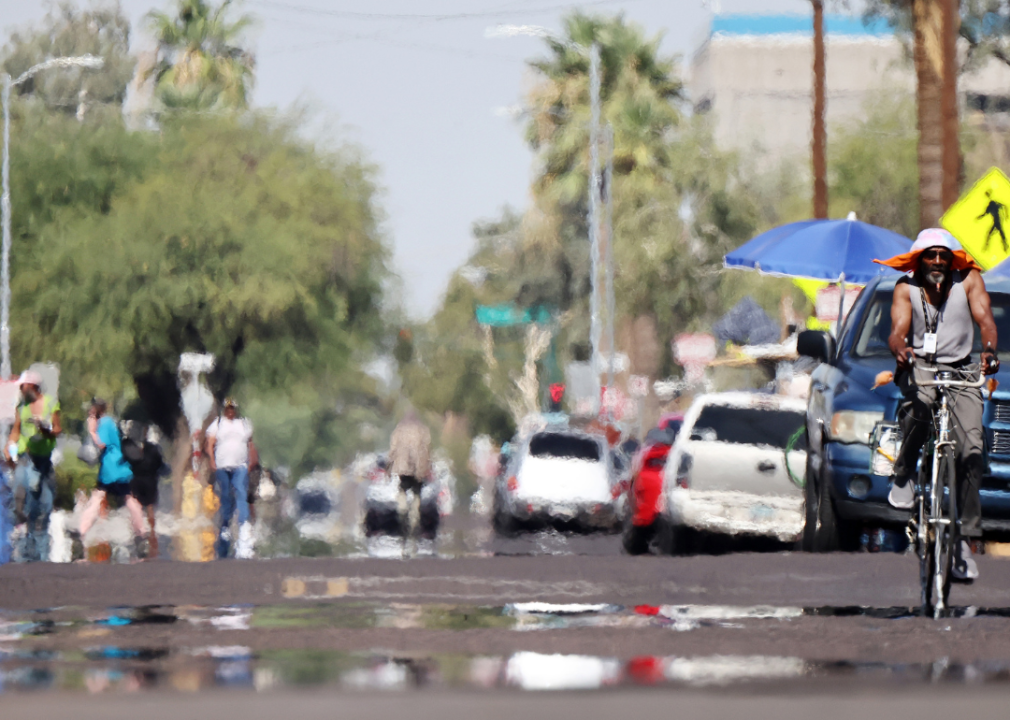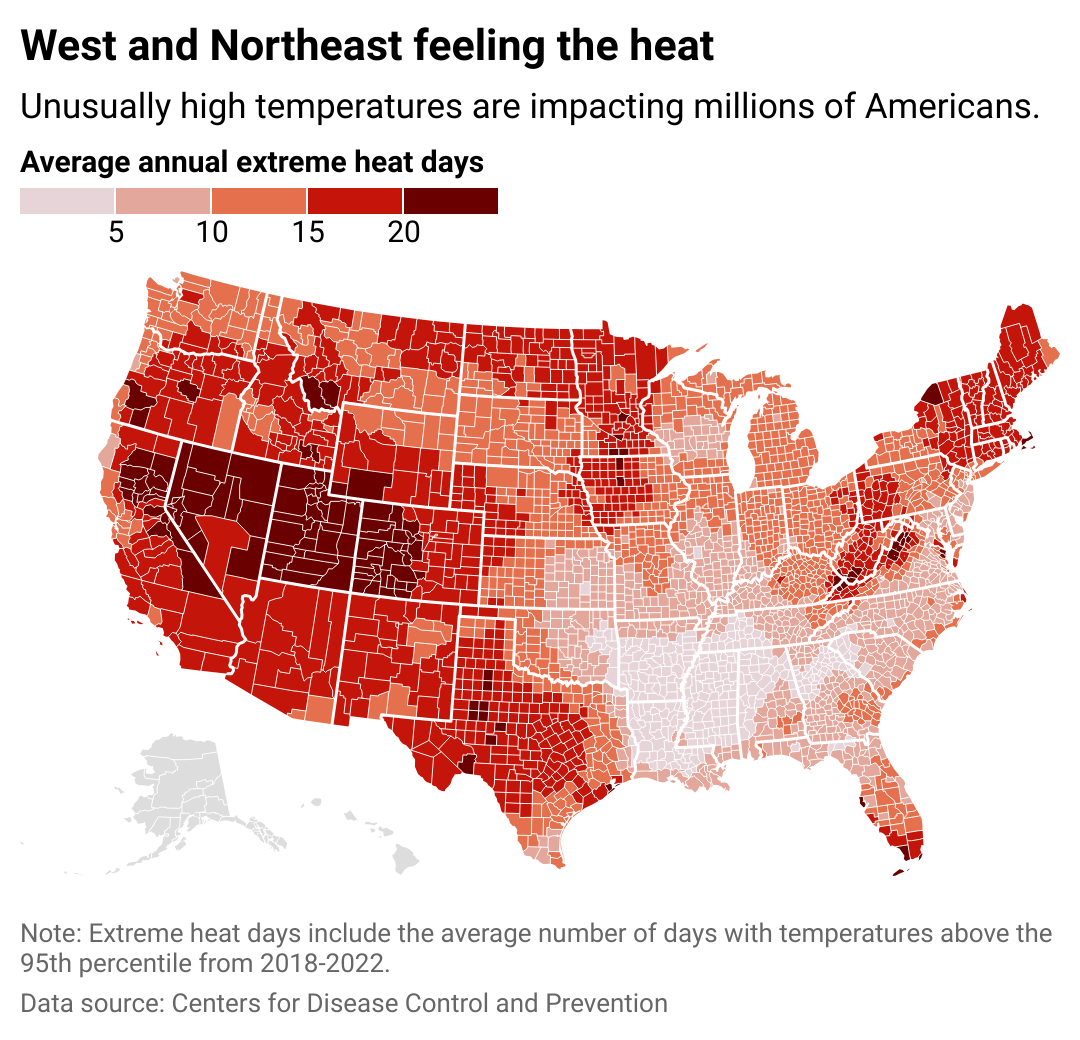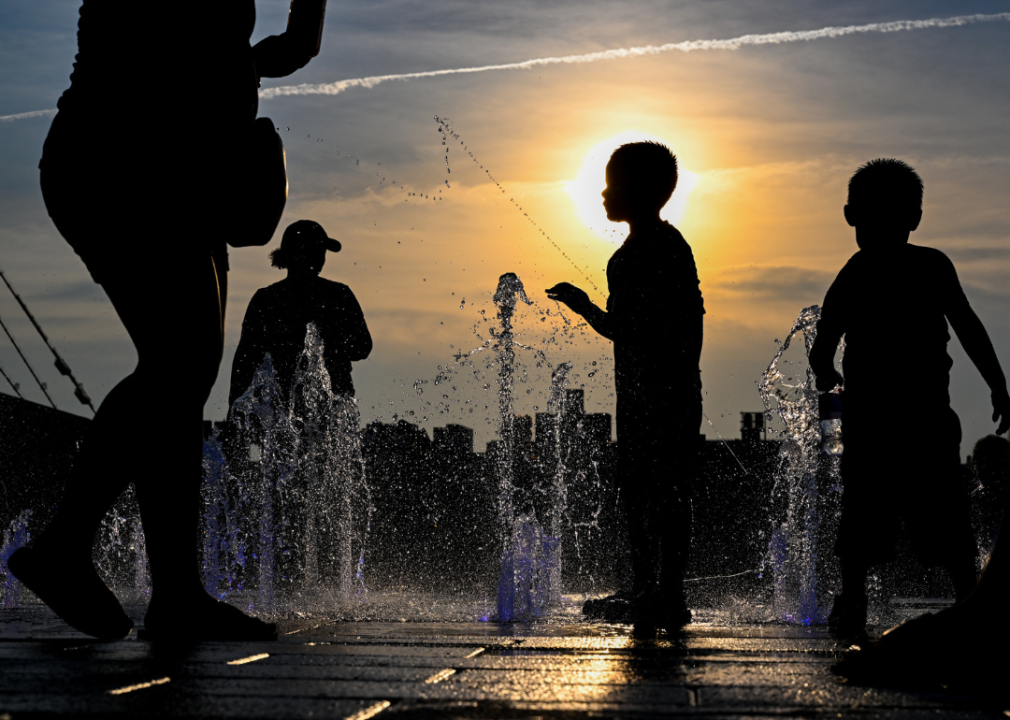As temperatures rise across the US, here's how to protect yourself this summer

Mario Tama // Getty Images
As temperatures rise across the US, here’s how to protect yourself this summer
A heat haze above a busy road with people driving, cycling, and walking.
It’s only halfway through, and already, 2024 is on its way to being one of the warmest years on record.
May marked the 12th straight month of record-high temperatures, according to the National Centers for Environmental Information. The average global surface temperature was 60.7 degrees Fahrenheit, about 2.1 degrees above the 20th-century average.
In June, 1,300 people died during extreme heat while participating in this year’s Hajj pilgrimage in Saudi Arabia, while a heat dome in the Midwestern and Northeastern parts of the United States broke temperature records in several states. Extraordinarily high heat is considered the deadliest extreme weather event, and climate change, fueled by human activities, is only expected to make the world even hotter in the years to come.
Northwell Health partnered with Stacker to see which regions have been most impacted by high-risk heat using data from the Centers for Disease Control and Prevention, the National Weather Service, and the National Oceanic and Atmospheric Administration.
![]()

Northwell Health
Western states experience more high-heat days
A map showing the average number of high-heat days between 2018 and 2022 by county. Western states are outsizedly impacted by hot temperatures, which can be deadly.
According to the latest data from the Environmental Protection Agency, Utah and Nevada experienced an average of at least 20 days of unusually hot temperatures between 2018 and 2022, about twice the national average.
A place experiences “extreme heat” when temperatures are 95% or above its historical average. In June, Salt Lake City reached a near-record 101 degrees, 30 degrees above normal, while the rest of the state also experienced triple-digit temperatures.
But it’s not just Western states that are feeling the heat. Between 2018 and 2022, Nantucket, Massachusetts, had an average of 30 extreme heat days. In fall 2023, public schools closed due to abnormally high temperatures.
People who experience extreme heat in traditionally cooler climates, including the Pacific Northwest, can be more at risk because they are ill-prepared. At least 54 people died in Multnomah County, Oregon, during a June 2021 heatwave; most didn’t have air conditioning in their homes.
High heat impacts some groups more than others. Older adults, athletes, and people who work outdoors are among the most at risk for heat-related injury.
A 2023 report from Kaiser Family Foundation found extreme heat disproportionately impacted people in some historically marginalized population groups, including Black people, Indigenous Americans, and noncitizens, who have higher rates of dying from heat exposure than white people.
In April, the Labor Department cited a Florida company for a lack of prevention against heat-related hazards after one of their employees, a 26-year-old man from Mexico, died of heat stroke last year.

Alexi Rosenfeld // Getty Images
How to keep cool when temperatures rise
Silhouettes of children playing in water.
State and local governments typically open cooling centers or distribute water to protect residents, but in recent years, there has been a move from response to action.
Earlier this year, the Biden administration launched the Heat and Health Index to help communities plan for high-heat days and prevent injury or death. In 2021, Phoenix created the first-of-its-kind Office of Heat Response and Mitigation to focus on reducing the impact of extreme temperatures in one of the country’s hottest cities. Some states have attempted to establish workplace safety standards for high-heat days to varying levels of success.
Stay safe during extreme heat by remaining indoors and in air conditioning, staying hydrated by drinking water and avoiding caffeine, and limiting strenuous activities. It’s also vital to know the signs of overheating, which include dizziness, confusion, and nausea.
Story editing by Alizah Salario. Additional editing by Kelly Glass. Copy editing by Kristen Wegrzyn.
This story originally appeared on Northwell Health and was produced and
distributed in partnership with Stacker Studio.